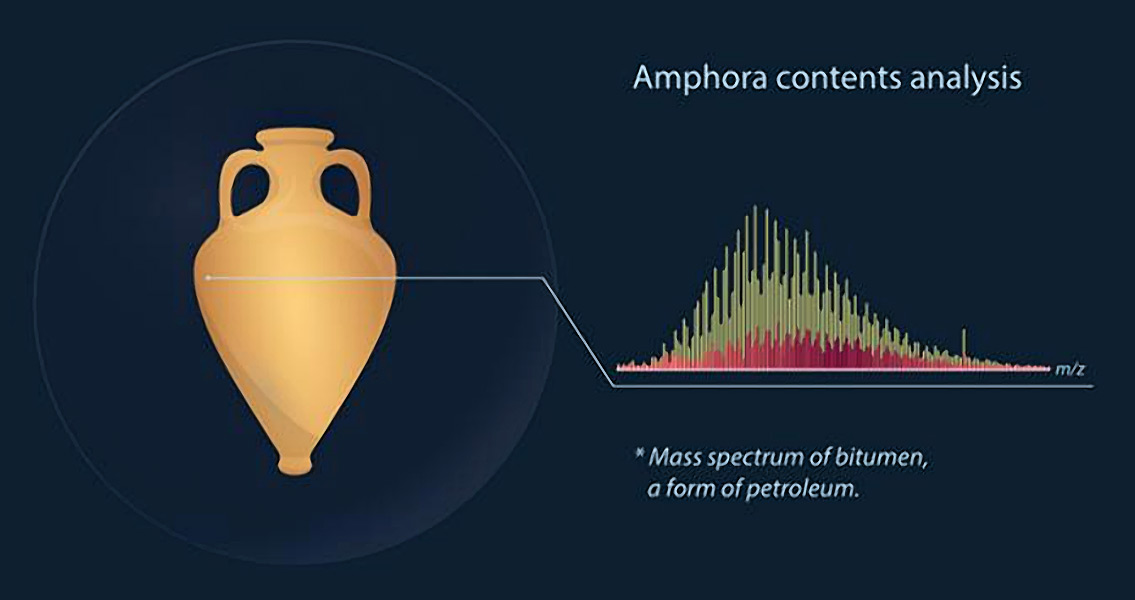<![CDATA[The contents of a ceramic Greek jug, known as an amphora, have been analyzed through the application of mass spectrometry, revealing the oldest sample of bitumen ever found in an ancient vase. The bitumen found within the amphora is a naturally-occurring form of petroleum and has been in use since the Neolithic. In fact, thanks to the role the substance played in embalming corpses, the word “mummy” comes from the Persian word for bitumen. Likewise the Greeks made good use of bitumen in times of war, and in their medicinal and construction efforts – many researchers believe that bitumen might have been used in the long-lost recipe to make Greek fire. In this case, the amphora in question was discovered in the Taman Peninsula by Russian archaeologists. The ancient jug, which has been dated to the fifth century BCE, might have been imported by the Greeks and represents the oldest such bitumen-filled amphora found to date. Scientists from the Moscow Institute of Physics and Technology (MIPT), the Emanuel Institute of Biochemical Physics of the Russian Academy of Sciences (IBCP RAS), the Institute for the History of Material Culture, and the Skolkovo Institute of Science and Technology (Skoltech) worked together to develop the innovative approach to organic compound analysis, resulting in new software written specifically to enable discoveries such as the millennia old bitumen. As analysis of ancient bitumen can reveal much about the age and origin of samples, the Russian scientists have been able to confirm the sample is nearly 2,500 years old. Using advanced mass spectrometry techniques, the research team was able to reveal that the sample’s oxygen content was 11 percent. This was considerably higher than the 1 percent or less regularly found in fresh samples of bitumen or petroleum. What this implied was that bacterial activity, over a very long period of time, had led to high levels of oxidation. As the rate of oxidation in bitumen can be tracked relatively closely, it was an easy task to determine the approximate age of the sample once the mass spectrometer came into play. Normal mass spectrometry cannot easily identify what types of molecules are present in certain substances. However, ultra-high resolution mass spectrometers can provide this information; in the case of the analysis of the bitumen sample in question, researchers had to use special laboratory-developed techniques to examine the sample at a resolution that dealt in fractions of electrons, resulting in highly accurate results. According to an MIPT press release, research supervisor Evgeny Nikolaev says that ultra-high resolution mass spectrometry has the potential to be an invaluable and powerful tool when it comes to analytical chemistry. In cases of archaeology, petrochemistry, and medicine, the technique’s ability to examine a substance’s molecular composition is unparalleled – and in this case, could reveal more information about the way trade goods traveled around the ancient world. The results of the research study, which have just been published in the Journal of Mass Spectrometry, can be found here Image courtesy of MIPT]]>
Mass Spectrometry Used to Analyze Contents of Ancient Jug
